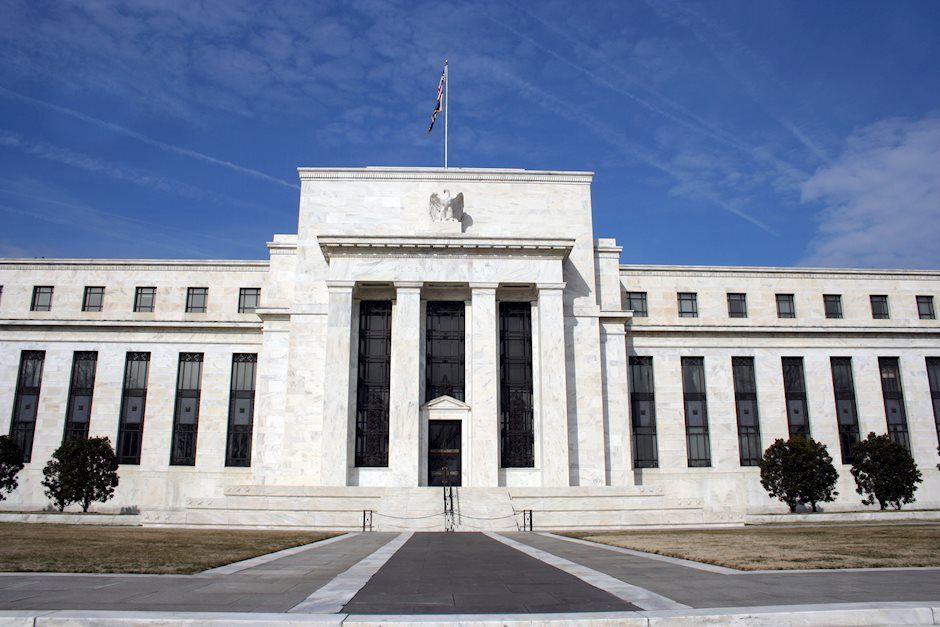US Fed to surprise markets

The outcome of the FOMC's upcoming meeting is uncertain and will therefor receive a lot of attention. The crucial question will be how the Federal Reserve will react to the escalation of the trade war with China and thus to the increased downside risks for the US economy. The markets have already clearly positioned themselves and are pricing in at least two rate cuts of 25 basis points each by the end of the year. In our view, there is a high risk that these expectations will be disappointed and that volatility in the markets will pick up immediately after the meeting.
The markets are already giving a high probability of a rate cut in July, i.e. at the next meeting. In order to confirm these expectations, the FOMC would have to provide clear indications in this direction as early as next week. We think this is unlikely, as such a turnaround in monetary policy would not be justified by the developments of recent weeks. In April, both the FOMC statement and the decision-maker survey had signaled unchanged interest rates through to the end of the year. The April data still showed a solid economy, but the situation worsened in May. Whether this was a reaction to the volatile stock markets, as we believe it was, or the beginning of an economic slowdown, cannot be estimated at the moment, all the more so as nobody knows how the trade war will develop. But in this environment, the announcement of a cut in interest rates would be premature.
We expect the FOMC statement to contain some changed wording that takes into account the uncertain environment, but we do not expect any clear indications of an interest rate cut. We assume much more that the body will continue to wait and only signal its willingness to act should it become necessary. Fed Chairman Powell's speech a little more than a week ago contained just such a phrase and was intended to prepare markets, in our view. It is more difficult to predict how the dot plot will turn out. In April, the vast majority of respondents had assumed that interest rates would remain unchanged; some had assumed an interest rate hike and a few had assumed two interest rate hikes by the end of the year. So, in order to confirm the market expectations, the forecasts of the decision-makers would have to shift to an extent that we consider unrealistic.
We expect the trade conflict between the US and China to ease over the coming months, especially as a slowdown in the economy is not in the interest of President Trump, who will be standing for re-election next year. We therefore assume that economic data will improve again and that the Fed Funds rate will remain unchanged.
EZ – manufacturing sentiment should slightly improve
Next week (June 21), a first flash estimate of the industry sentiment for the Eurozone, Germany and France will be released. In May, sentiment clouded slightly after the intensification of the trade conflict between the US and China. In particular, the situation for intermediate and capital goods continued to weaken, while there was a slight improvement for consumer goods. At the country level, Germany, Austria and Italy were the worst performers in the Eurozone in May. For Spain and France, on the other hand, the data indicates slight growth in industrial activity.
After the recent rise in risk appetite on the capital markets, we expect a slight improvement in the mood in the Eurozone manufacturing sector in June following the weak figures in May. Nevertheless, the Eurozone's manufacturing sentiment will continue to suffer in the coming months from the global trade conflict (auto tariffs against Europe possible) and the unresolved Brexit question. Therefore, a possible meeting of Trump and Xi on the fringes of the G-20 summit in Japan on June 28-29 would be of particular importance. Since Trump has to face re-election at the end of 2020, we assume that there should at least be progress in the second half of 2019 in the trade conflict, so that Trump can present his electorate with success in 2020. In view of the political turmoil in the United Kingdom, however, we expect a hard Brexit at the end of October, which we believe will hit the Eurozone economy particularly in 4Q19 and 1Q20.
Author

Erste Bank Research Team
Erste Bank
At Erste Group we greatly value transparency. Our Investor Relations team strives to provide comprehensive information with frequent updates to ensure that the details on these pages are always current.

















